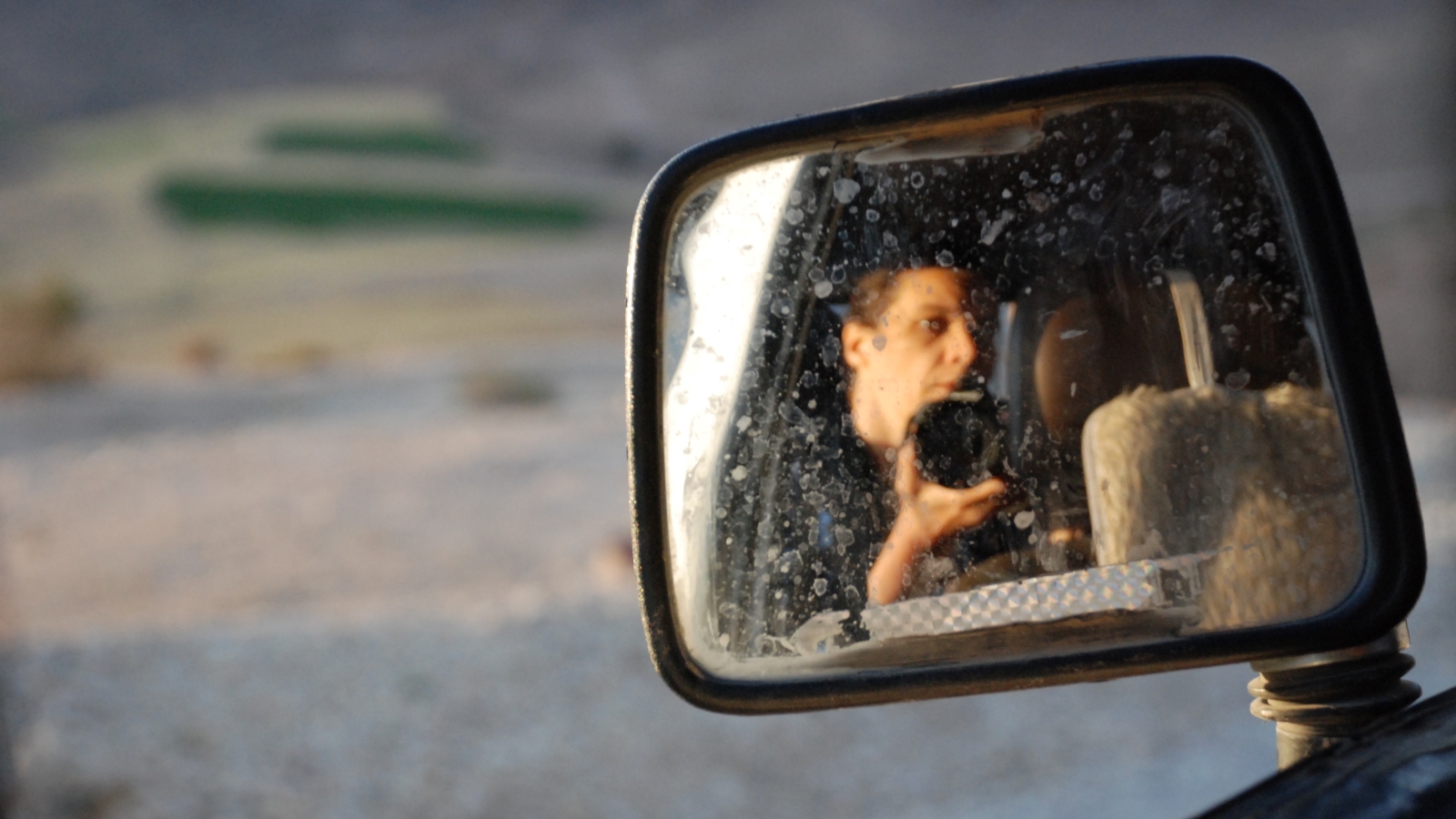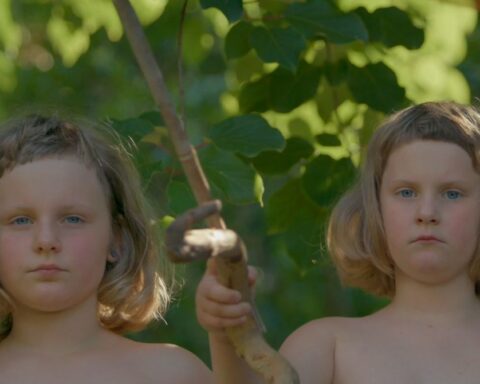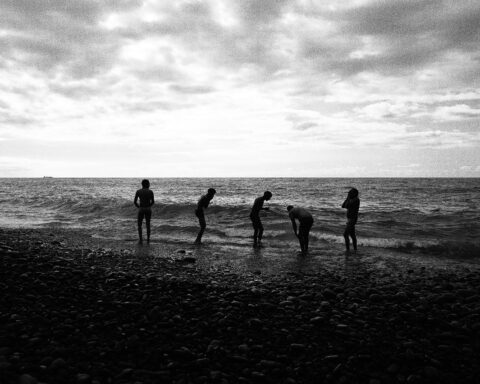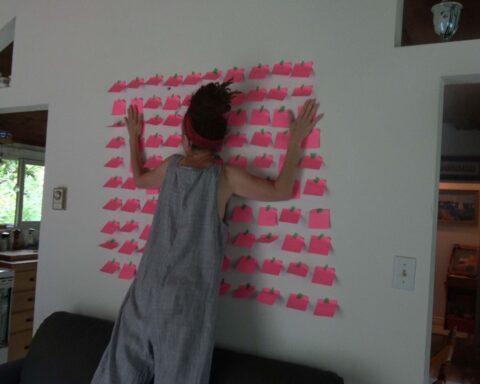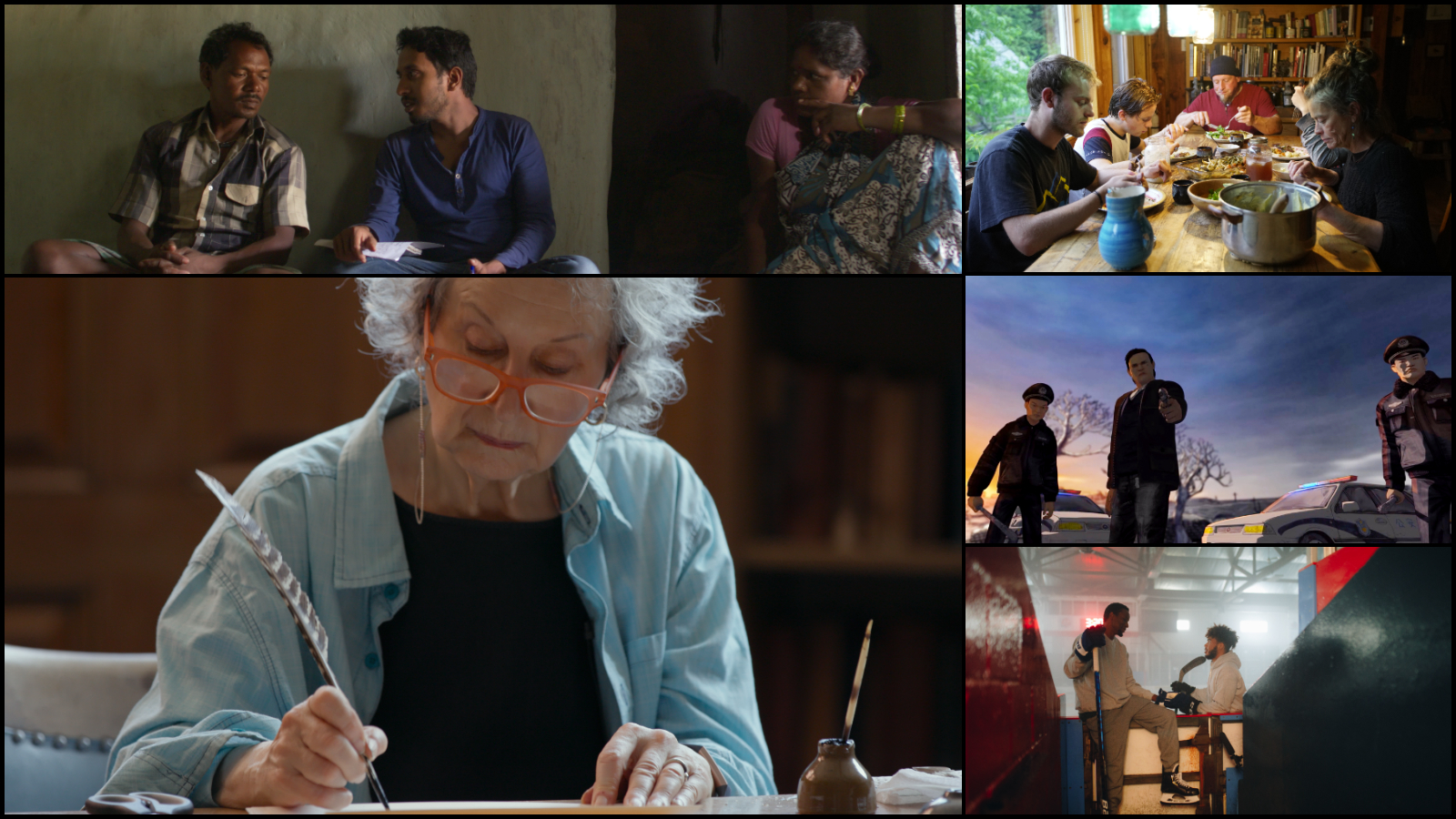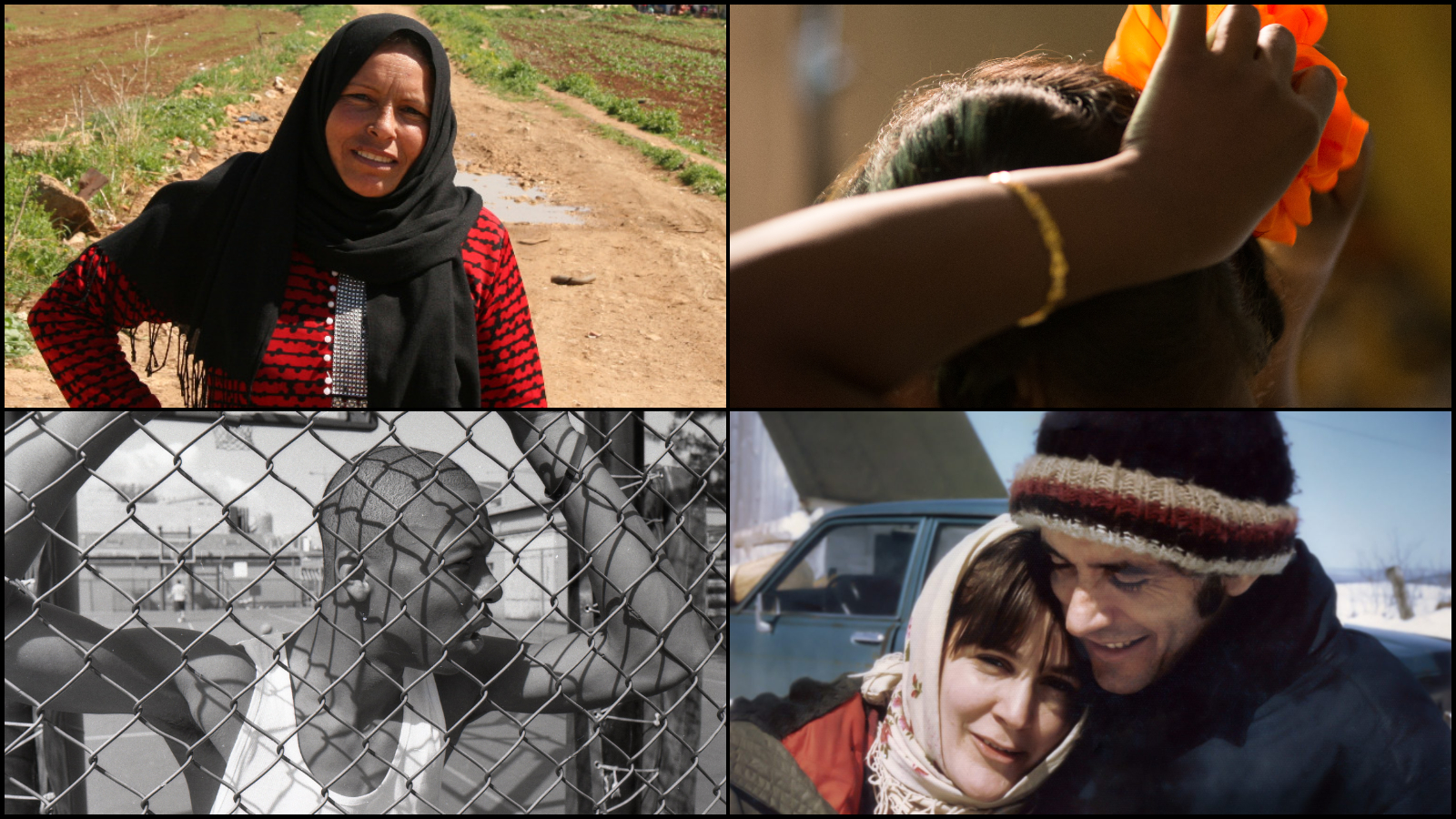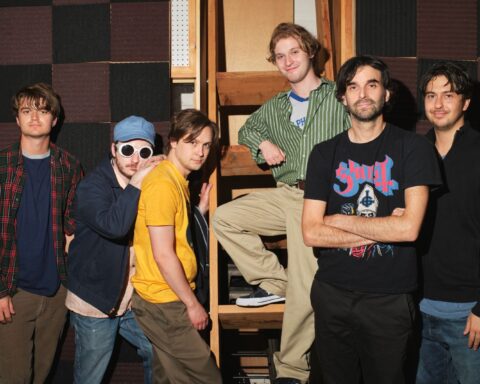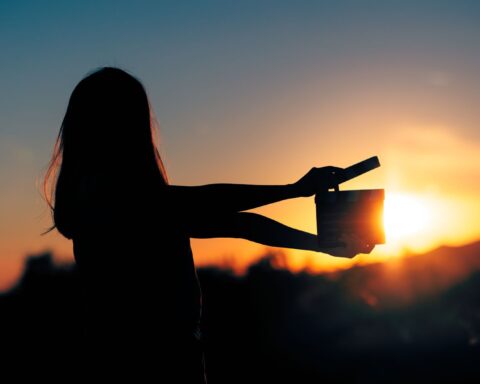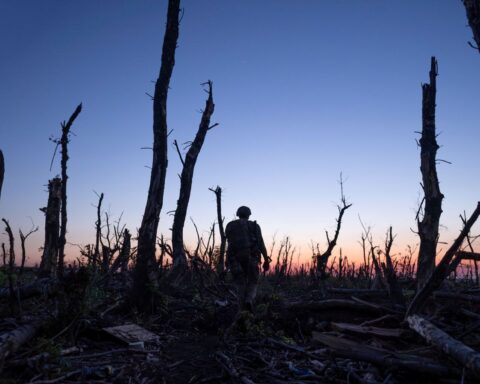When talking about his work, Jonas Mekas refused the filmmaker moniker. Instead, he insisted, he was a filmer. A pioneer of what we now term the “diary film,” Mekas made dozens over his career. He rarely used synchronized sound, and his editing style privileged intuitive rather than linear or thematic connections. Particularly with his film work (as opposed to his digital), he shot in bursts, creating a flickering effect, as if loved ones and memories were slipping through his fingers. His film diaries became a tool for self-discovery, a place to journey for a sense of belonging and meaning.
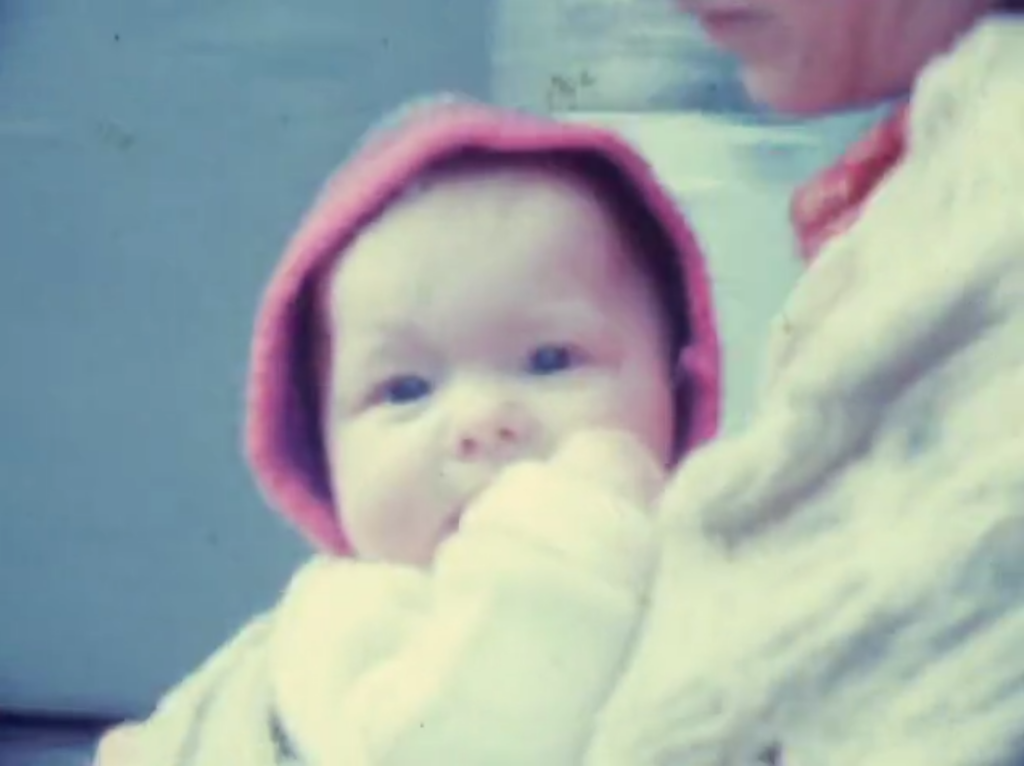
What exactly is a diary film, though? It’s an autobiographical mode of filmmaking that privileges the mundane and emphasizes the filmmaker’s subjectivity. Michael Sicinski, experimental cinema writer and critic, has explained, “The diary or journal has a unique relationship to such cinematic concepts as point-of-view and temporality since the filmmaker is establishing her/himself as the ‘speaker’ of the film, and ‘everyday life’ as the timeframe.” Aside from Mekas, filmmakers like Stan Brakhage, Chantal Akerman, Agnès Varda, Anne Charlotte Robertson, and Caveh Zahedi have been associated with the form. Strict distinctions aren’t particularly helpful when discussing diary, a genre as diverse and malleable as the variety of artists who engage with it. What is clear, though, is that those artists who emerged mainly in the late 20th century reflect the values and engagements of a pre-Internet age.
With the advent of new filming technologies and new platforms to share our daily lives, many of us have taken our private lives and made them public. We’ve gone to Twitter to confess our sins; we’ve posted birthday pies on Instagram. Even the moderate social media user has likely made thousands of posts over the past decade. As many of us lived more of our lives online, it began to take on more of the shape of a diary. We all became filmers.
What does it mean to make a diary film in the 21st century? Have the conditions of contemporary life rendered the form obsolete, or conversely, more important than ever? Looking at filmmakers like Jonas Mekas, Sofia Bohdanowicz, Kirsten Johnson, and RaMell Ross (among others), the contemporary diary film begins to take shape, and a project of discovery begins.
The End of an Era: Outtakes from the Life of a Happy Man
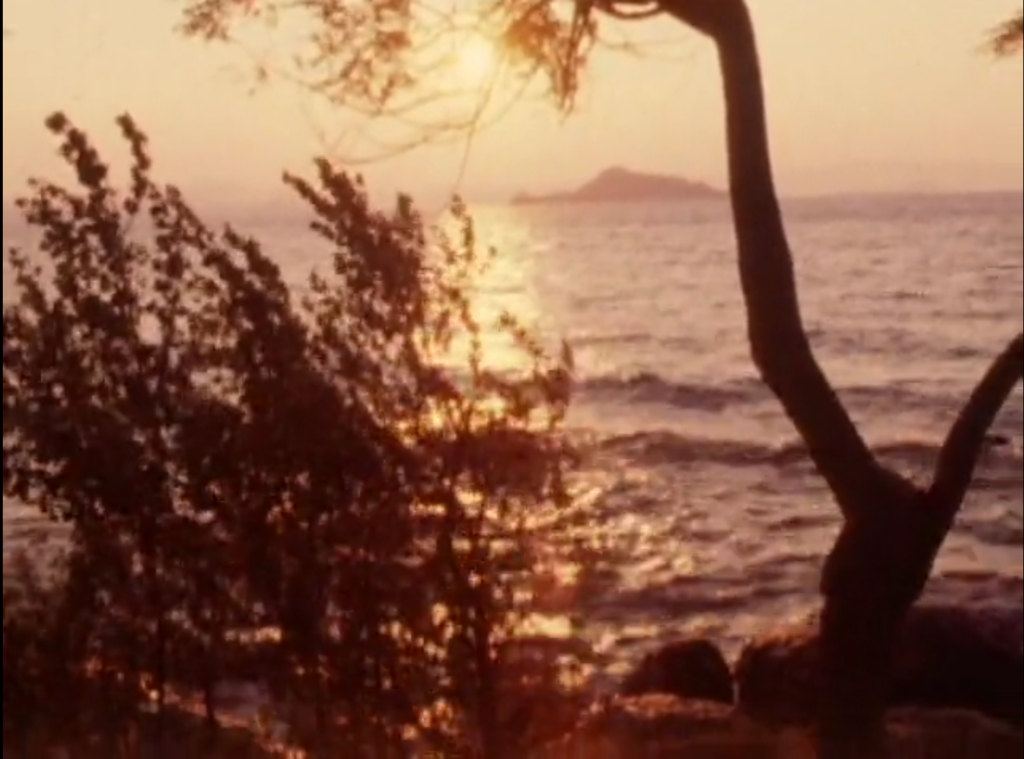
Released as Jonas Mekas turned 90, Outtakes from the Life of a Happy Man (2012) can be understood as his last complete diary film. The title is self-explanatory as the film is built around outtakes of his previous films; snapshots and home-video clips from his long life. The soundtrack is occasionally pierced by Mekas and his gravelly voice; he repeats, “No, no, no, these are not memories. Every image, every detail is real.” The film also features video of Mekas alone in his dark office, stitching together the film we’re watching.
Mekas, who during the Second World War became a “displaced person,” explicitly used his diaries to find himself. His movies were focused on the search for a home, for belonging. Yet, though often beautiful and redemptive, this process also becomes marked by a sense of loss. Catherine Russell writes, “Mekas tells us that there is something inherent within cinematic representation that dislocates the self.” While Outtakes stands among his most optimistic and self-accepting films, it’s still punctuated by deep loneliness. These are not memories, just images. “A kind of emptiness overtook me,” he recites. “I’ve been alone for so long.”
The diary becomes insufficient to pull together the fragments of self. As Mekas reaches the end of his life, the names and ties of all these people die with him. The films can’t restore Mekas as a whole, but they can immortalize the people and places he loved. Eulogizing Mekas, Michael Sicinski wrote about his work, “We all build our small worlds in the face of daily tyranny, if only to survive.” Though Mekas embraced digital, his practice and work belong to the previous century.
Rebirth in Celluloid: Maison du bonheur
In her review of Outtakes from the Life of a Happy Man, critic Amy Taubin declared, “Glory to 16mm—already a signifier of a vanished world.” Yet 16mm remains an alluring realm for diary filmmakers even today.
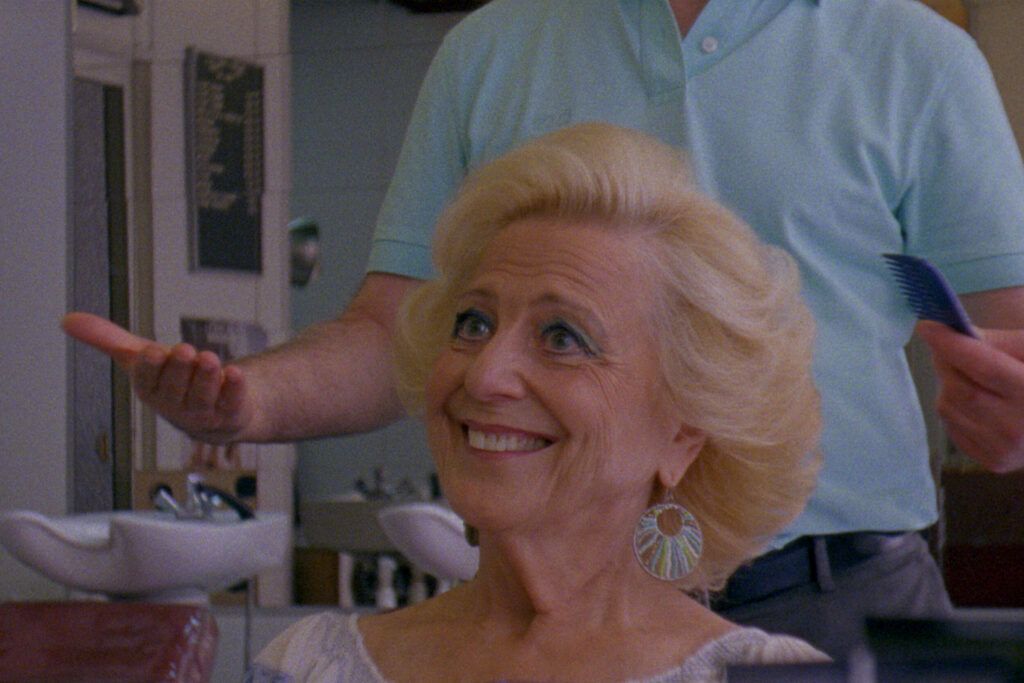
One summer, Canadian filmer Sofia Bohdanowicz packed up her bags and headed to Montmartre to live with a stranger. That film would become Maison du bonheur (2017). Bookended by Bohdanowicz’s narration, we understand that this project had no direction but soon became a portrait of her host, Juliane Sellam, a vibrant and colourful astrologer. The film exposes the fine line between film portraiture and diary, as Bohdanowicz’s gaze and presence inform the film’s direction. As the film goes on and Bohdanowicz becomes more present, her footprint grows. If film diaries involve, as Catherine Russell writes, “a journey between the times of shooting and editing,” through the editing process, Maison du bonheur becomes an “act of love,” a work of memorialization through care and attention.
The project did not have to be shot in 16mm, but one understands that Bohdanowicz was drawn to the format. It harkens back to the films and filmmakers that informed her practice (such as Chantal Akerman) and in a digital world that feels untethered, shooting on film can feel like an attempt to anchor the filmmaker. A desire to embrace past technologies becomes a means of time travel, a way to recreate the means of discovery before the collective unconscious was absorbed by computers.
Michael Renov, as quoted by Russell, says, “We are all of us lost in the chasm between our desire to recapture the past and the impossibility of a pristine return.” The use of film in this case, as well as some of Bohdanowicz’s other films, feels infused with a deep sense of loss and melancholia: an attempt to recapture what has already been lost.
Cameraperson and Grief Diaries
Maureen Turim writes of autobiographical cinema that it’s not just the story of any life, “but the story of the artist.” With Cameraperson (2016), cinematographer/director Kirsten Johnson opens with a title card that reads, “I originally shot this for other films and ask you to see it as memoirs.” The first words spoken are Johnson’s voice off-camera asking someone, “You see?” The line between filmer and filmmaker has never been more blurred. The camera gazes upon wildflowers swaying in the breeze.
Cameraperson explores the ethical limits of documentary, reflecting on representation and consent issues. It’s a multifaceted examination of non-fiction filmmaking and the relationship between filmmaker, camera, and subject. Most of the film is composed of footage shot for other projects, but intercut with home-video footage, particularly images of Johnson’s mother, who suffered from Alzheimer’s.
As Michael Almereyda writes about the film for Criterion, Johnson riffs on the “notion that we’re all entangled; time and space can’t always be taken literally; recorded reality can be reorganized to comply with memory and imagination.” The film’s intuitive structure challenges and refocuses Johnson’s identity as filmer and filmmaker. Her work becomes an act of holding on to her loved ones, creating a document that will outlive her memory, but it also feels insufficient. The camera bears witness but doesn’t see, and it’s unclear if it’s possible for Johnson (or any of us) to genuinely locate ourselves within images.
Diary films are infused with deep melancholia. They crystallize the past, often romanticizing and beautifying it. What isn’t present on screen, both literally and spiritually, is seemingly lost to time. Russell writes about Chris Marker’s Sans soleil (1983), “If all memory is photographic, that which is not filmed is lost.” While the filmers try to capture life, they only succeed in recording the superficial. The camera can’t articulate relationships and feelings; it cannot encompass the totality of time and place. In many ways, more than presence, diary films are marked by a sense of absence.
In Cameraperson, we see several scenes of Johnson trying and failing to integrate her mother’s death (by filming her urn) into the movie. Other diary films like Laurie Anderson’s Heart of a Dog (2015) and the work of Sophy Romvari play with the insufficiencies of audiovisual language to translate loss. Intuiting that the camera cannot fully capture someone’s sense of self, these diaries challenge how our fast-paced and online lives fail to give us the time and space to grieve. Without actual resolution and, in a way, lacking a presence commonly associated with diary filmmaking, they capture how grief pulls us towards a lost past.
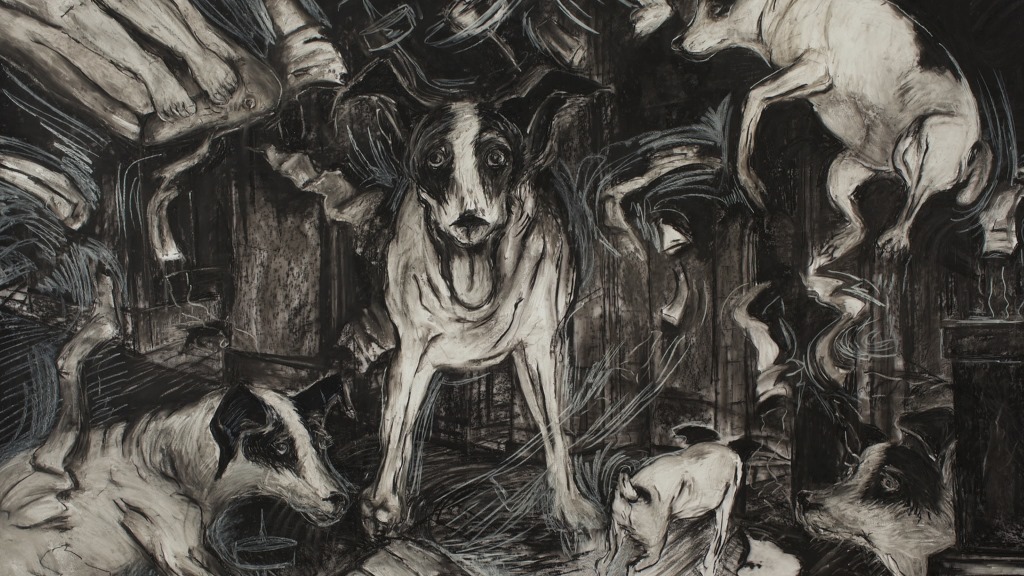
Framing New Identities: Hale County, This Morning, This Evening
The film diary has long been the realm of outsiders, working outside of traditional means of production. For women and queer and BIPOC creators in particular, it’s been a rich mode of filmmaking to explore issues of self and identity that challenge and engage with social expectations. As a medium defined by non-linear narrative and subjectivity, it engages with larger social and historical framings from a personal rather than an objective point of view. Using the gap between filming and editing, the process allows its makers to craft new identities.
As Amy Taubin argues, if Hale County, This Morning, This Evening (2018) was released decades ago, without question, its filming style would see it categorized among the avant-garde and within the film diary tradition. Director RaMell Ross shot over 1,300 hours of footage over five years; he filmed his colleagues and friends, the people who lived in his town. The film captures a specific moment in Ross’s personal history when he moved to Hale County to teach photography and coach basketball, and examines how Black identity has been “framed” by cinema.
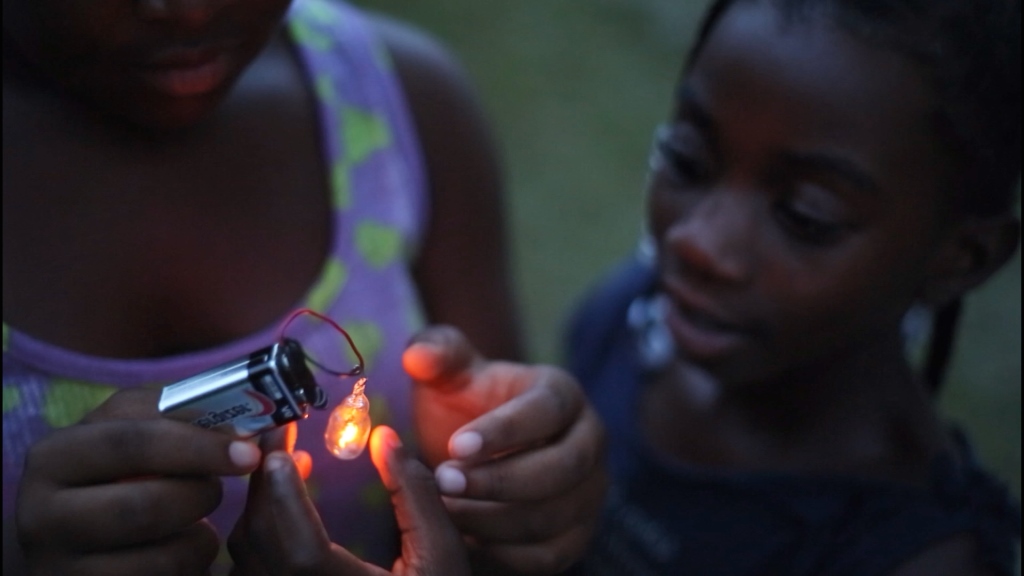
RaMell Ross is present in the film, as the filmic experience is unique to his presence. He isn’t merely an observer. He participates in the world. Ross was a photographer before he took up filming those around him: His viewpoint is unmistakably that of an artist. Through his camera, his subjects are elevated and revered. His framing, often unconventional but always poetic and often incorporating the natural world (a breeze, a storm, a sunset), lends the whole project a rigorous romanticism grounded in life’s everyday joys and losses.
Portraiture, for Ross, is a diary, much like the way Mekas documented the lives, faces and gestures of those around him rigorously. The people and places we choose to put in the camera reflect our values, the people we love and care for. As Lydia Ogwang writes about Khalik Allah and his multifaceted diary/essay Black Mother, the film engages with “portraiture as (auto)biography.” It’s not only a portrait of people and places but a reflection on the creators themselves. Film as a diary becomes not only a portrait of what is lost to time but a genuine attempt to forge new identities and frameworks. For Black Americans, who have had little control over their image and stories, the diary becomes a ground where one can create new frameworks of identification.
Film Diaries and New Futures
The diary film has found a new renaissance in the 21st century, in conversation and conflict with new information technology. New cameras and software allow for more flexibility than before to pick up visual recording devices and start filming. With the availability of new platforms and the ease of recording, the diary has become one of the most dominant forms of expression in the 21st century. Yet, with the most prevalent forms of diary posted and connected with major tech companies and platforms, the mainstream iteration of self-exploration through the documentary is not only overtly curated but ultimately cannibalizes self-expression in favour of advertising revenue and predatory algorithms.
As people grapple with cobbling together “personal brands,” diary films offer an alternative means to search for the self, something more reflective, less catered, and (theoretically) transformative. As some filmmakers like Sofia Bohdanowicz use film to refuse the “presentness” and instantaneousness of contemporary self-expression, other filmmakers like RaMell Ross turn away from the self and focus on a pluralistic perspective as a means of discovery. Other filmmakers like Isiah Medina, with films like 88:88 (2015), a diary-adjacent project, push that line even further by completely eschewing individual perspectives, favouring collective futures.
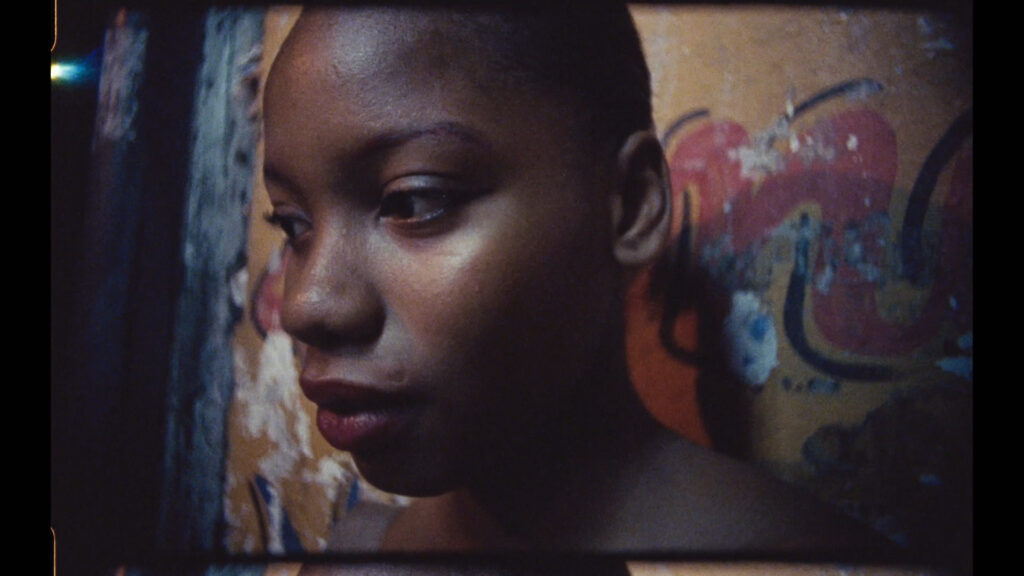
Diary not only documents the mundane, the minutiae of every day, but it also allows for greater reflection on time itself. It collapses walls between the past, present, and future, allowing new ideas to emerge. Diary exists at the point of creation, but, more often than not, comes into its own at a later point, re-edited, reappraised and reorganized.
The pressures of our contemporary world can feel overwhelming, but that doesn’t mean there isn’t any hope. Over the past few months, I find myself often returning to an entry from Jonas Mekas’s published diaries, initially written in March 1960: “Periods of darkness, however, are really periods of birth. The anxiety, the trembling of this generation is really the first condition of rebirth of a more conscious existence.”




